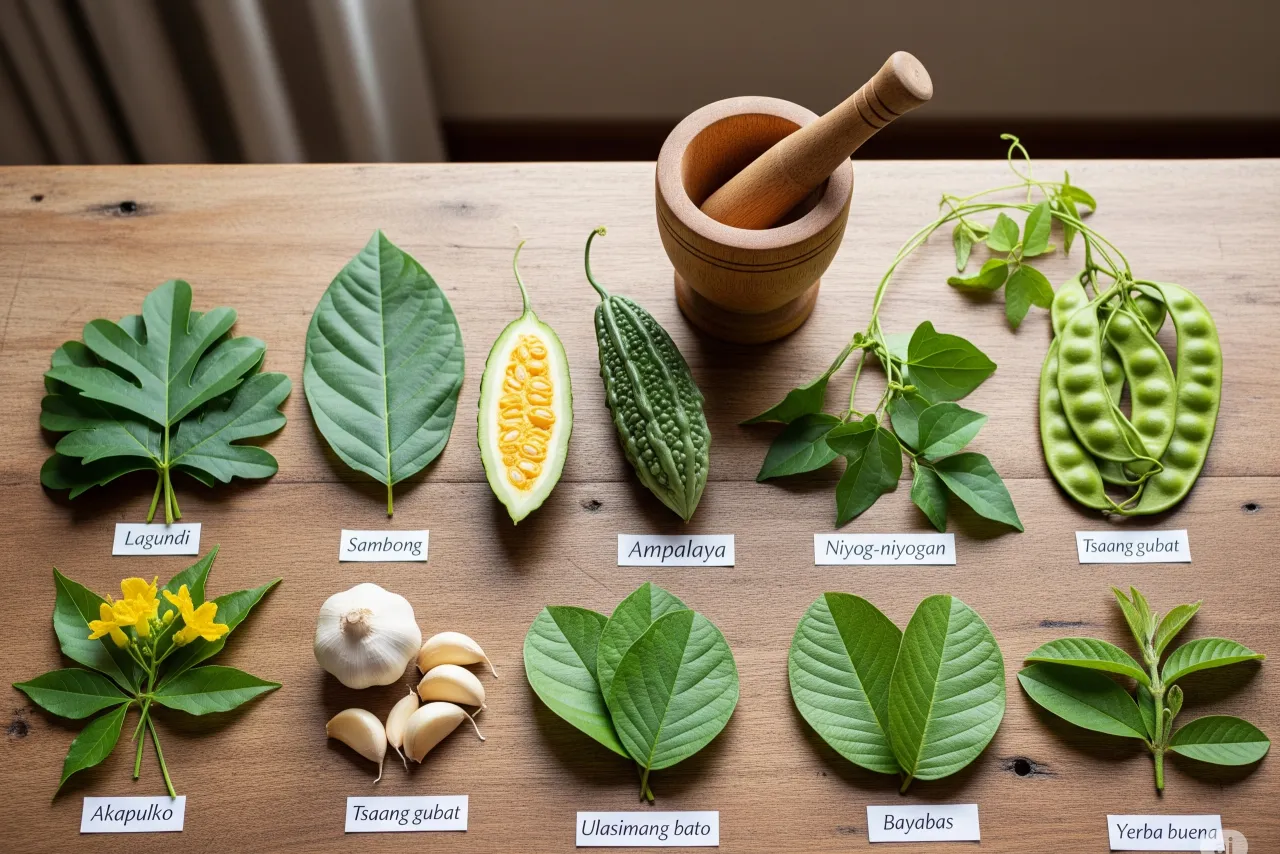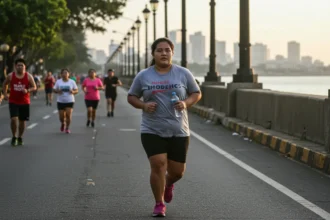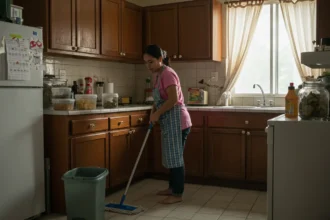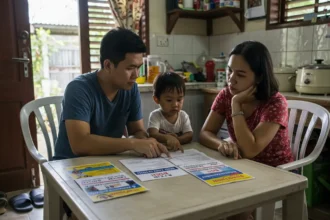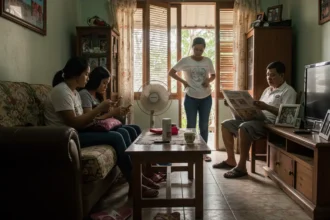Herbal medicine has always been part of Filipino culture, from hilot traditions to backyard remedies passed down through generations. The Department of Health (DOH) recognizes this and has formally approved 10 specific herbal medicines as safe and effective for certain health conditions. These plants are not random folk cures; they are backed by scientific studies conducted in the Philippines and validated for their medicinal properties.
- 🌱Lagundi (Vitex negundo)
- 🌿 Sambong (Blumea balsamifera)
- 🌿 Ampalaya (Momordica charantia)
- 🌿 Bayabas (Psidium guajava)
- 🌿 Tsaang Gubat (Carmona retusa)
- 🌿 Niyog-niyogan (Quisqualis indica)
- 🌿 Akapulko (Cassia alata)
- 🌿 Ulasimang Bato (Peperomia pellucida)
- 🌿 Yerba Buena (Clinopodium douglasii)
- 🌿 Bawang (Allium sativum)
- 📋 Summary Table: DOH-Approved Herbal Medicines
- Frequently Asked Questions about DOH-Approved Herbal Medicines in the Philippines
- ✨ Balancing Tradition and Science in Filipino Health
For many Filipinos who cannot afford costly pharmaceuticals, these herbal alternatives offer affordable, accessible, and culturally accepted solutions to common health problems. But what exactly are these 10 approved herbal medicines, and how can families use them responsibly? Let’s go through each one carefully.
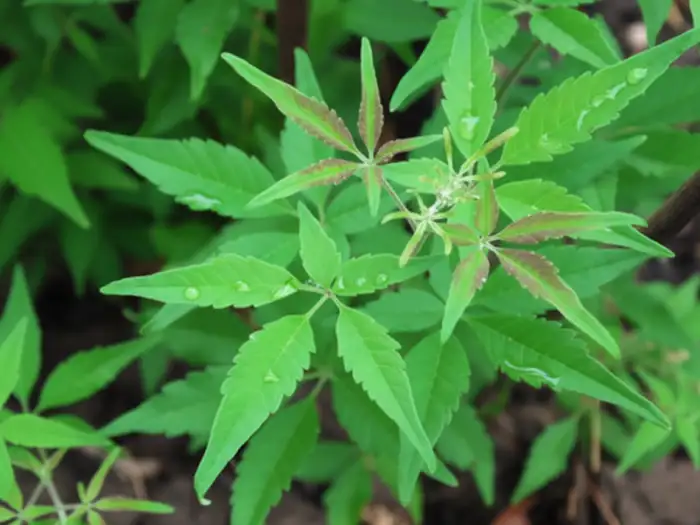
🌱Lagundi (Vitex negundo)
Lagundi is one of the most popular DOH approved herbal medicines in the Philippines, trusted for generations as a natural remedy for coughs, colds, and mild asthma. Known locally as the five-leaf chaste tree, it grows abundantly in tropical climates and is commonly found in backyards, vacant lots, and even roadsides across the country.
The good news? Lagundi is easy to grow at home. You can plant it directly in your garden or even in large pots, making it a practical choice for families who want quick access to herbal remedies. It thrives best in sunny areas with well-drained soil, requires little maintenance, and can be propagated from cuttings or seeds. Within months, you’ll have a sturdy shrub ready for harvesting leaves that can be used for teas, decoctions, or syrups.
What It’s Good For
Lagundi works as an expectorant and bronchodilator, which means it helps loosen phlegm, open up the airways, and make breathing easier. The DOH recommends it for:
-
Coughs (with or without phlegm)
-
Mild to moderate asthma
-
Bronchitis
-
Fever and body aches
-
Sore throat
How It Works
The leaves contain natural compounds like chrysoplenol D, which has anti-inflammatory and muscle-relaxing properties. That’s why Lagundi-based syrups and tablets, developed and approved by the DOH, are now sold in drugstores nationwide as affordable alternatives to synthetic cough medicines.
How to Prepare at Home
If you want to make your own Lagundi decoction, here’s a simple method:
-
Gather about 5 fresh Lagundi leaves and wash them thoroughly.
-
Boil in 2 cups of water for 10–15 minutes until reduced.
-
Let cool, then drink about half a cup, 2–3 times daily.
You can also use dried leaves for herbal tea, though for children it’s best to rely on DOH-approved Lagundi syrup for proper dosage.
Safety Reminders
-
Effective for mild to moderate respiratory conditions but should not replace prescribed medicines for severe cases like pneumonia.
-
Avoid overuse, as it may cause stomach upset.
-
Pregnant and breastfeeding women should consult a doctor first.
-
Always see a health professional if cough or asthma symptoms persist or worsen.
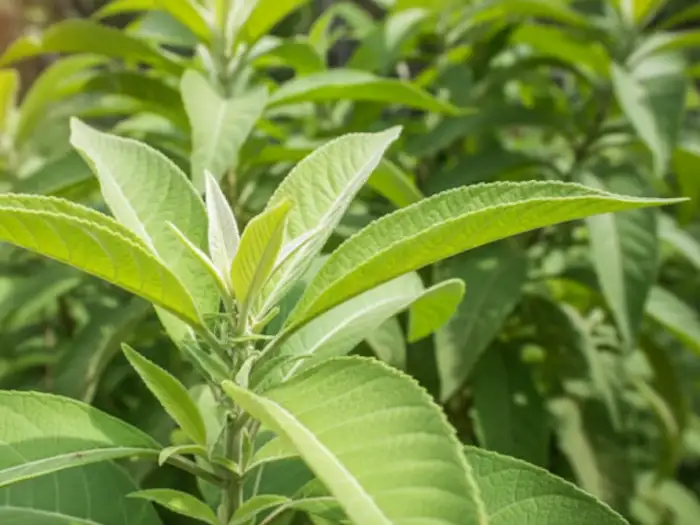
🌿 Sambong (Blumea balsamifera)
Sambong is another widely used herbal medicine approved by the DOH, valued for its ability to support kidney health and urinary function. Recognizable by its fragrant, hairy leaves, Sambong is a hardy shrub that grows well in tropical climates and can be found in gardens, open fields, and rural backyards across the Philippines. Many families plant it in pots or directly in the soil since it thrives in full sun with minimal care.
What It’s Good For
The Department of Health highlights Sambong’s role as a diuretic and anti-urolithiasis agent — in simpler terms, it helps the body produce more urine and prevents the formation of kidney stones. It’s also traditionally used for:
-
Urinary tract infections (UTIs)
-
Fluid retention (edema)
-
Mild hypertension
-
Coughs and colds
How to Use It
The most common preparation is as a tea or decoction:
-
Wash a handful of fresh Sambong leaves.
-
Boil in 2 cups of water for 10–15 minutes.
-
Let cool, then drink ½ cup up to 3 times a day.
For convenience, DOH-approved Sambong tablets and capsules are also available in pharmacies nationwide.
Safety Reminders
-
Sambong is most effective as a preventive aid for kidney stone formation, not as a cure for advanced kidney disease.
-
People with chronic kidney disease should consult their doctors first before using it regularly.
-
Overuse may lead to excessive fluid loss and electrolyte imbalance.

🌿 Ampalaya (Momordica charantia)
Known to most Filipinos as ampalaya or bitter melon, this vegetable is more than just a staple on the dining table — it’s also a DOH approved herbal medicine for managing diabetes. The Department of Health recognizes Ampalaya for its potential to help regulate blood sugar, thanks to compounds like charantin and polypeptide-p, which act in ways similar to insulin.
What It’s Good For
Ampalaya has long been used as a complementary remedy for:
-
Type 2 diabetes management
-
Improving glucose tolerance
-
Boosting immunity (rich in vitamins A, C, and iron)
-
Supporting digestion and liver function
How to Use It
Filipinos consume Ampalaya in several ways:
-
As food: Stir-fried or cooked with eggs and meats for a nutritious dish.
-
As tea/decoction: Boil fresh or dried leaves and drink ½ cup once or twice daily.
-
As supplements: Capsules and tablets are widely available as standardized preparations.
Safety Reminders
-
Ampalaya is a supplementary aid, not a substitute for prescribed diabetes medicines or insulin.
-
Works best as part of a balanced diet and medical supervision.
-
Pregnant women should avoid excessive intake, as high doses may stimulate uterine contractions.
-
Those with hypoglycemia should also use it cautiously to avoid sudden drops in blood sugar.
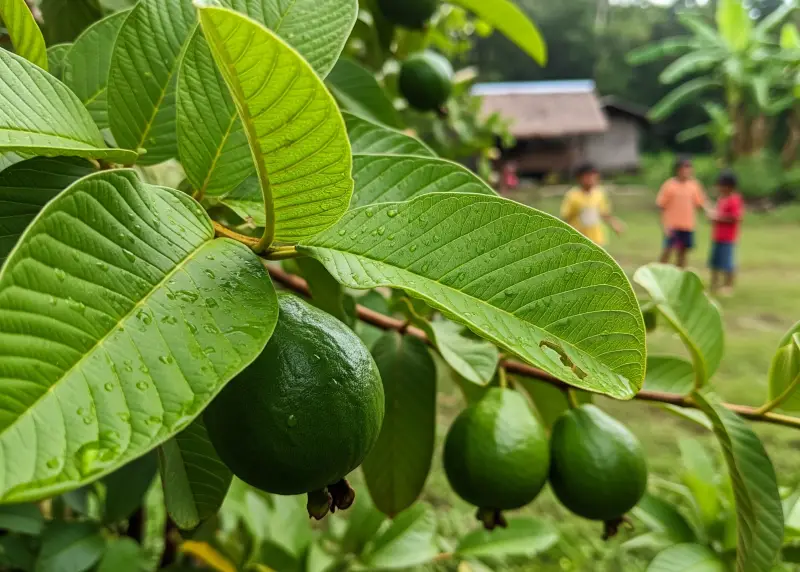
🌿 Bayabas (Psidium guajava)
Bayabas, or guava, is one of the most familiar and widely available herbal medicines recognized by the DOH. Found in countless Filipino backyards, this hardy fruit tree is valued not only for its sweet fruit but also for its leaves, which contain strong antiseptic and anti-inflammatory properties. For generations, guava leaves have been used as a practical home remedy for everyday ailments.
What It’s Good For
The Department of Health highlights guava leaves as a natural aid for:
-
Wound cleaning – prevents infection and speeds healing
-
Skin infections – helps soothe rashes and minor cuts
-
Oral hygiene – effective against mouth sores, bleeding gums, and sore throat
-
Diarrhea – guava leaf decoction helps reduce symptoms due to its antimicrobial compounds
How to Use It
Guava leaves can be prepared in simple ways at home:
-
For wounds and skin care: Boil a handful of leaves in clean water for 10 minutes, let cool, then use the liquid to wash affected areas.
-
For oral hygiene: Use the cooled decoction as a mouthwash or gargle 2–3 times a day.
-
For diarrhea: Drink half a cup of guava leaf tea/decoction 2–3 times daily until symptoms improve.
Safety Reminders
-
Bayabas is safe for first aid and mild conditions, but serious infections or persistent diarrhea require medical treatment.
-
Always wash the leaves thoroughly before boiling to avoid contamination.
-
Pregnant or breastfeeding women should consult a doctor before taking guava decoctions internally.
Because it’s abundant, easy to prepare, and highly effective for common ailments, bayabas remains one of the most practical DOH endorsed herbal remedies that Filipino families trust.

🌿 Tsaang Gubat (Carmona retusa)
Tsaang gubat, literally meaning “forest tea,” is another DOH approved herbal medicine in the Philippines that has earned a spot in many Filipino households. This shrub grows in the wild but can also be cultivated in backyards and gardens, especially in rural areas. Its small, shiny leaves are the key ingredient, traditionally brewed into tea for various stomach and intestinal problems.
What It’s Good For
The Department of Health recognizes tsaang gubat as effective in managing:
-
Diarrhea and dysentery
-
Stomachache and intestinal spasms
-
Mild gastroenteritis
-
Mouth rinse for ulcers and gum problems
-
Possible relief for skin allergies (based on studies)
How to Prepare It
-
Tea/Decoction: Wash a handful of fresh leaves, boil in 2 cups of water for 15 minutes, then let cool. Drink ½ cup 2–3 times daily.
-
Mouth Rinse: Use the cooled decoction as a gargle for mouth sores or gum swelling.
-
Skin Wash: Apply the decoction to rashes or itchy skin as a soothing wash.
Safety Reminders
-
Tsaang gubat is safe for most people when consumed moderately, but drinking too much may lead to constipation or stomach upset.
-
It should be used for mild gastrointestinal issues only — persistent diarrhea or severe stomach pain still requires medical attention.
-
Pregnant and breastfeeding women should consult their doctor before use.
Practical, easy to grow, and highly versatile, tsaang gubat remains one of the most trusted DOH-endorsed herbal remedies for everyday digestive concerns.
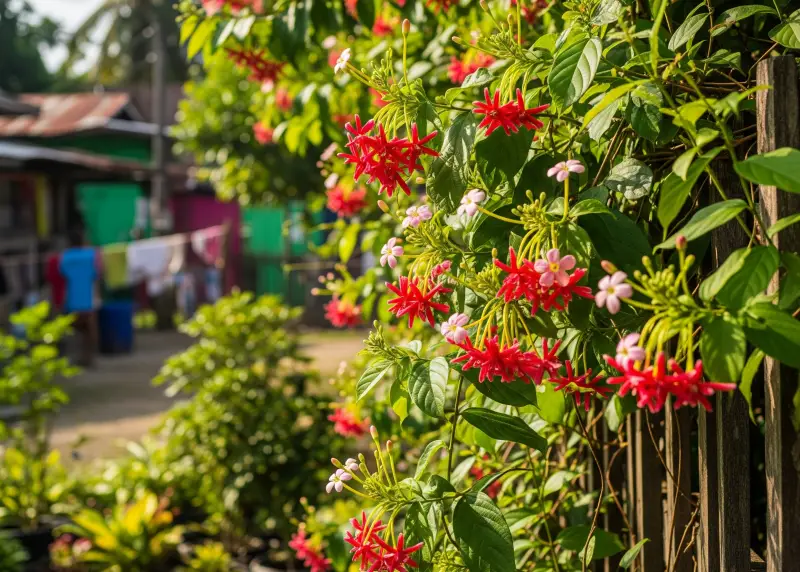
🌿 Niyog-niyogan (Quisqualis indica)
Niyog-niyogan, also known as Chinese honeysuckle, is a climbing vine with striking red and white flowers that’s more than just ornamental. It’s officially recognized as a DOH approved herbal medicine for deworming, particularly effective against intestinal worms like roundworms and whipworms.
What It’s Good For
The Department of Health highlights niyog-niyogan for its role as an anthelmintic, meaning it helps expel parasites from the digestive system. Traditionally, its dried seeds are eaten to naturally deworm both children and adults.
How to Use It
-
Seeds (for deworming): The usual preparation involves chewing the dried seeds after meals. The recommended dose varies by age, and it’s very important to follow proper guidance:
-
4–5 seeds for children ages 4–6
-
6–7 seeds for children ages 7–9
-
8–10 seeds for children 10–12
-
Up to 12 seeds for adults
-
-
DOH emphasizes that seeds should be taken only once a year or as directed by a health worker.
Safety Reminders
-
Overconsumption can cause nausea, stomach pain, headache, or vomiting.
-
Parents should never self-medicate children without consulting a doctor or local health worker to ensure correct dosage.
-
Not recommended for pregnant women.
Affordable, natural, and effective, niyog-niyogan remains one of the most practical DOH recommended herbal remedies for families who prefer traditional deworming methods — but it must always be used with caution and proper supervision.
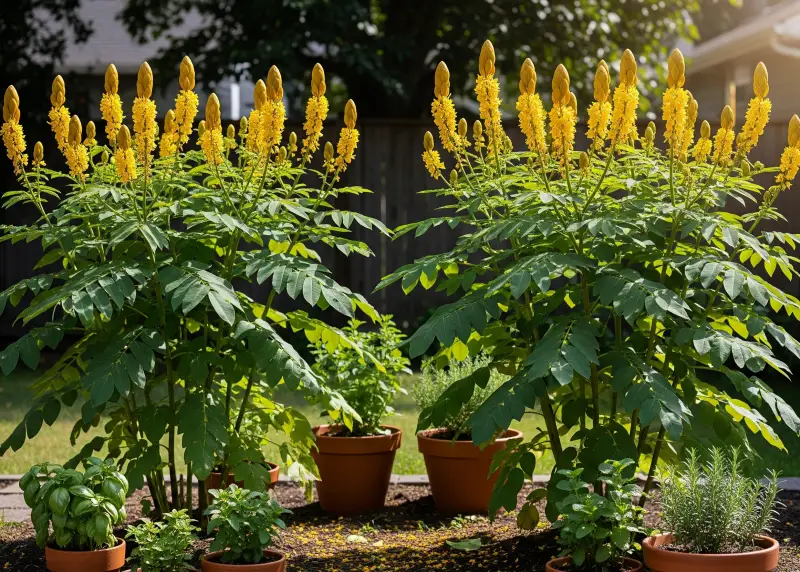
🌿 Akapulko (Cassia alata)
Also called ringworm bush, akapulko is a well-known DOH approved herbal medicine for skin infections. This shrub grows easily in tropical climates like the Philippines and is often seen in gardens, roadsides, and vacant lots. Its bright yellow flowers make it decorative, but its real value comes from its leaves, which contain chrysophanic acid — a natural compound that kills fungi and relieves itching.
What It’s Good For
Akapulko is commonly used to treat:
-
Ringworm
-
Athlete’s foot
-
Eczema and other fungal rashes
-
Itchy skin caused by mild fungal infections
How to Use It
-
Fresh leaves: Wash and crush the leaves until the juice comes out, then apply directly to the affected skin area 1–2 times daily.
-
Decoction: Some boil the leaves in water and use the cooled liquid to wash the affected skin.
-
Commercial ointments: For convenience, DOH-approved akapulko ointments and creams are available in pharmacies as standardized formulations.
Safety Reminders
-
Akapulko is safe for mild to moderate fungal infections but may not be enough for severe or persistent cases.
-
Avoid applying on open wounds.
-
Always wash affected areas and keep them dry, since fungi thrive in moist environments.
-
If irritation worsens or spreads, consult a doctor for stronger antifungal treatment.
Practical, effective, and affordable, akapulko remains one of the most trusted herbal medicines endorsed by the DOH for everyday skin problems in tropical settings.
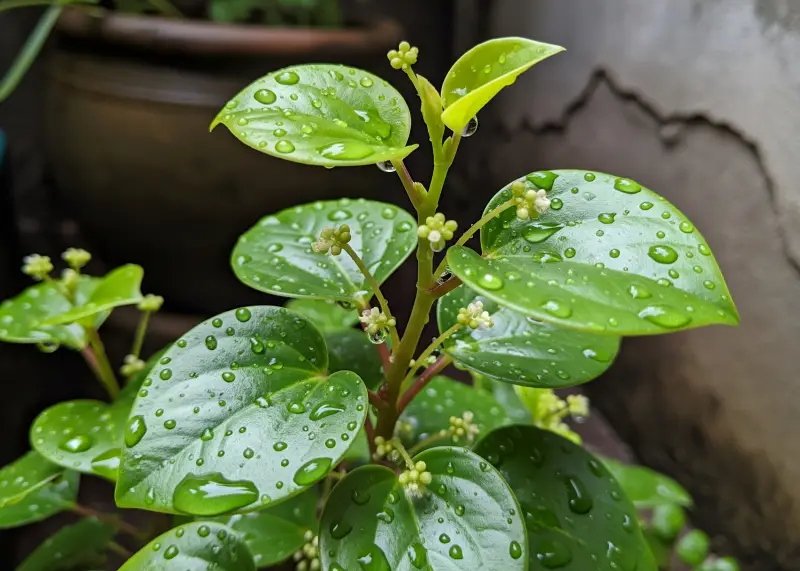
🌿 Ulasimang Bato (Peperomia pellucida)
Ulasimang bato, more commonly known as pansit-pansitan, is a humble weed that often grows in damp, shady areas — from backyard corners to cracks between stones. Despite its simple appearance, it’s officially recognized as a DOH approved herbal medicine for gout because of its natural analgesic and anti-inflammatory properties.
What It’s Good For
The Department of Health highlights ulasimang bato’s role in managing:
-
Gouty arthritis – helps lower uric acid levels in the body
-
Joint pain and inflammation – provides natural relief for swelling
-
General body aches – due to its mild pain-relieving compounds
How to Use It
-
As food: The fresh leaves and stems can be eaten raw as a salad, often with vinegar or calamansi.
-
As tea/decoction: Wash a handful of fresh leaves, boil in 2 cups of water for 10–15 minutes, and drink ½ cup twice daily.
-
Supplements: Capsule and tablet forms are available in pharmacies for more consistent dosing.
Safety Reminders
-
Ulasimang bato is best as a complementary therapy for mild gout and joint pain, not a replacement for prescribed uric acid–lowering drugs.
-
Those with chronic gout should continue regular medical management and use this herb only as an adjunct.
-
Avoid overconsumption, as excessive intake may cause stomach discomfort.
-
Pregnant and breastfeeding women should seek medical advice before use.
Accessible, affordable, and easy to grow, ulasimang bato is a practical DOH recommended herbal remedy that helps Filipinos manage gout naturally alongside proper medical care.
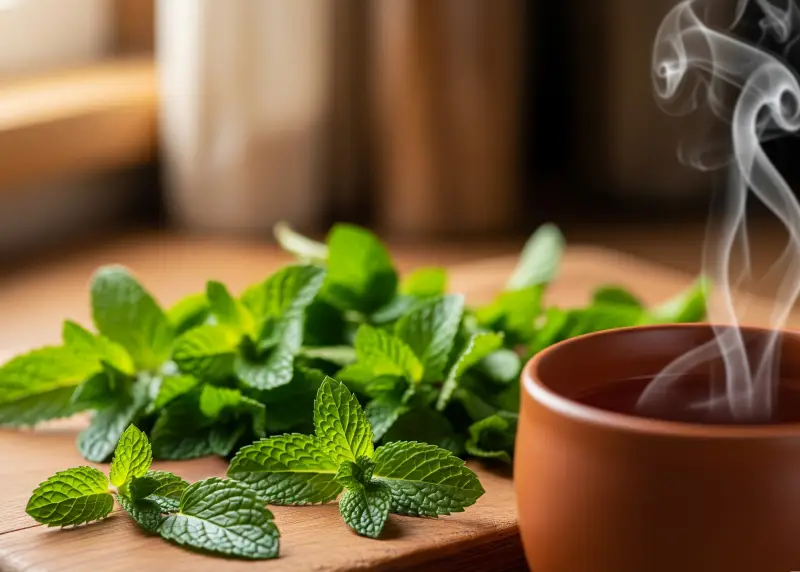
🌿 Yerba Buena (Clinopodium douglasii)
Yerba buena, more widely known as peppermint, is a refreshing herb officially recognized as a DOH approved herbal medicine for pain relief. It has been part of Filipino households for generations, often kept in backyard gardens or small pots for quick access whenever minor ailments strike. The plant’s distinct menthol aroma isn’t just soothing — it’s a natural compound that works as an analgesic, giving a cooling effect that helps ease discomfort.
What It’s Good For
The Department of Health lists yerba buena as a natural remedy for:
-
Headaches – applied as a compress or drunk as tea
-
Toothaches – used as a gargle or applied directly for temporary relief
-
Stomachaches – brewed into tea to ease cramps and indigestion
-
Minor body aches – thanks to its mild anti-inflammatory properties
How to Use It
-
Tea/Decoction: Wash a handful of fresh leaves, boil in 2 cups of water for 10 minutes, then drink warm to relieve stomach pain or headaches.
-
Compress: Pound fresh leaves, wrap in a clean cloth, and apply to the forehead or temples for headache relief.
-
Mouthwash/Gargle: Boil leaves and use the cooled liquid as a rinse for toothache or sore gums.
-
Ointments: Some commercial balms and liniments use yerba buena extract for muscle pain.
Safety Reminders
-
Yerba buena provides temporary relief but is not meant for chronic or severe pain.
-
Avoid excessive consumption, as too much peppermint tea may irritate the stomach.
-
Pregnant and breastfeeding women should consult a doctor before regular use.
-
Persistent pain requires medical consultation.
Easy to grow, versatile, and effective, yerba buena remains one of the most trusted DOH herbal medicines that families turn to for quick, natural first aid.
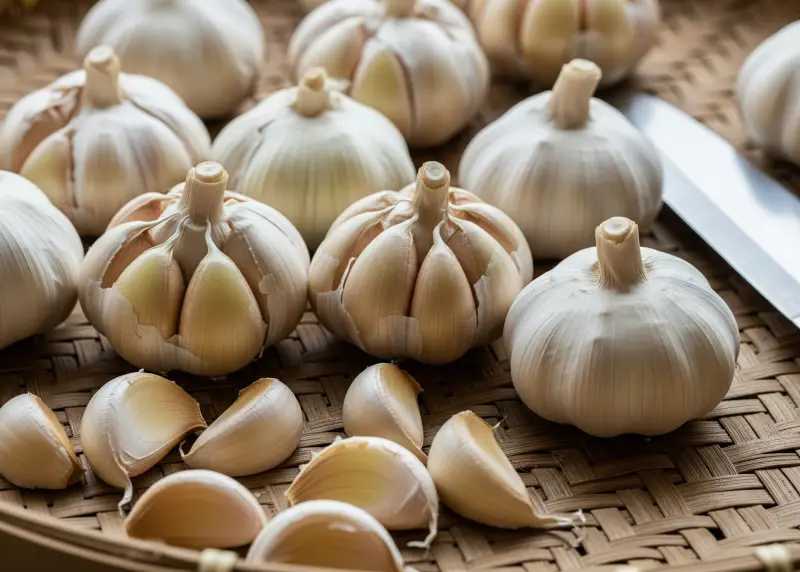
🌿 Bawang (Allium sativum)
Bawang, or garlic, is more than just a kitchen staple — it’s also a DOH approved herbal medicine for heart health. For centuries, Filipinos have used bawang both as food and as medicine, and modern science has confirmed its benefits. Garlic contains allicin, a natural compound shown to help reduce blood pressure and cholesterol levels, making it a valuable ally for cardiovascular wellness.
What It’s Good For
The Department of Health endorses bawang as a natural aid for:
-
Mild hypertension – helps lower blood pressure
-
High cholesterol – assists in reducing LDL (“bad” cholesterol)
-
Heart health support – when included in a balanced diet
-
Immune system boost – antibacterial and antiviral properties from allicin
How to Use It
-
As food: Incorporate raw or lightly cooked garlic into meals daily for long-term benefits.
-
Supplements: Bawang capsules are available in pharmacies nationwide as standardized preparations for those who prefer not to eat raw garlic.
-
Traditional use: Some Filipinos eat 1–2 cloves of raw garlic in the morning with water, though the taste and odor can be strong.
Safety Reminders
-
Bawang is best for mild cases and preventive care, but it should not replace prescribed medication for hypertension or heart disease.
-
Excessive raw garlic may cause stomach upset, heartburn, or bad breath.
-
Those taking blood-thinning medication should consult their doctor before high garlic intake or supplement use.
-
For optimal results, bawang works best as part of a heart-healthy lifestyle that includes proper diet, exercise, and regular medical checkups.
Affordable, accessible, and effective, bawang remains one of the most practical DOH recommended herbal medicines for supporting everyday heart health in Filipino households.
📋 Summary Table: DOH-Approved Herbal Medicines
| Herbal Medicine | Scientific Name | Primary Use | Preparation |
|---|---|---|---|
| Lagundi | Vitex negundo | Cough, asthma, bronchitis | Syrup, decoction |
| Sambong | Blumea balsamifera | Kidney stones, diuretic | Tea, tablets |
| Ampalaya | Momordica charantia | Diabetes management | Tea, capsules |
| Bayabas | Psidium guajava | Wound cleaning, mouthwash | Decoction, wash |
| Tsaang Gubat | Carmona retusa | Diarrhea, stomachache | Tea |
| Niyog-niyogan | Quisqualis indica | Intestinal worms | Seeds |
| Akapulko | Cassia alata | Fungal infections | Topical |
| Ulasimang Bato | Peperomia pellucida | Gout, arthritis | Fresh, tea |
| Yerba Buena | Clinopodium douglasii | Pain relief | Tea, compress |
| Bawang | Allium sativum | Hypertension, cholesterol control | Food, capsules |
Frequently Asked Questions about DOH-Approved Herbal Medicines in the Philippines
-
What does it mean that a herbal medicine is “DOH-approved”?
DOH-approval means the herbal medicine has been studied by institutions like PITAHC for safety and effectiveness. It’s not just folk belief—it’s science + tradition combined. But it doesn’t mean it replaces proper medical care, especially for serious illness. -
Can I use these herbal medicines instead of my prescription drugs?
Generally, no. They’re meant to complement, not replace prescriptions. For example, DOH-approved ampalaya (bitter melon) can help with mild blood sugar control, but it doesn’t replace insulin or diabetes medications. Always check with your doctor first. -
Which DOH herbal plant helps with coughs and asthma?
Lagundi (Vitex negundo) is the go-to plant for cough, asthma, and respiratory issues. It acts as an expectorant (loosens phlegm) and bronchodilator (helps airways relax). It’s available as syrups, teas, and decoctions. -
Are these herbal remedies safe for children and pregnant women?
Caution is needed. Some herbs are safer than others, but dosage, preparation, and underlying health all matter. Pregnant women, small kids, and people with chronic diseases should consult a healthcare provider before using any herbal medicine. -
How do I prepare herbal medicines at home properly?
Usually through decoctions or teas—boiling leaves or parts of the plant, straining, then drinking or using them as washes. Also, ointments or topical applications are used for herbs like akapulko. Make sure the plant is correctly identified, clean, and used in recommended amounts. -
Are there side effects or risks in using these herbal plants?
Yes. Overuse or wrong preparation can lead to problems—nausea, upset stomach, or more serious effects (e.g. herbs like niyog-niyogan if taken in too large a dose). Also, mixing herbal remedies with other medicines can cause interactions, so care and consultation are essential. -
Where can I buy DOH-approved herbal medicines or get them legally?
You can find them in pharmacies, health centers, and even in commercial forms like capsules or teas. Some households also grow the plants themselves and prepare them at home if they know the proper way. -
Can herbal medicines treat severe conditions (like advanced infections, chronic heart disease etc.)?
No, they are not a substitute for medical treatment in severe or life-threatening conditions. Herbal medicines are best for mild to moderate issues or as preventive / adjunct therapy. For serious cases, hospital treatment and prescribed medicine is necessary. -
Is it cheaper to use herbal medicine than pharmaceuticals?
Often yes. Many of the herbal plants are locally available, grown in backyards, or inexpensive to purchase. For everyday mild ailments, they can be an affordable, accessible option. But for complex or severe issues, the costs of meds + doctor visits are unavoidable. -
How often has DOH updated or validated these herbal medicines? Are there new ones pending?
DOH, via PITAHC, continues to study herbal medicines. The list of 10 comes from ongoing scientific validation. People sometimes propose additional plants, but until DOH confirms them, they’re not officially endorsed. So it’s good to stay informed about newer studies or announcements.
✨ Balancing Tradition and Science in Filipino Health
The DOH-approved herbal medicines represent a bridge between traditional Filipino healing practices and modern scientific validation. They prove that our rich natural resources can provide effective solutions to everyday health issues when studied and applied responsibly.
However, it’s vital to remember that herbal remedies are not cure-alls. While they provide relief and support for common conditions, they cannot replace the precision and necessity of modern medicine for serious illnesses. Filipinos must learn to balance appreciation of traditional remedies with awareness of their limitations.
At the same time, the accessibility of these herbal options empowers families, especially those in rural areas, to take charge of their health. By growing, preparing, and using these plants wisely, communities can reduce reliance on costly pharmaceuticals.
Ultimately, the key is education and responsible use. Herbal medicines should not be romanticized as miracle cures, nor dismissed as superstition. They are tools — valuable when used correctly, but potentially harmful when misused. The DOH’s endorsement of these 10 herbs gives Filipinos both assurance and accountability: assurance that these plants work, and accountability to use them properly.
For the Filipino family, the challenge and opportunity lie in knowing when to turn to the backyard garden and when to seek the doctor’s clinic. In that balance, we find not just wellness, but wisdom.



